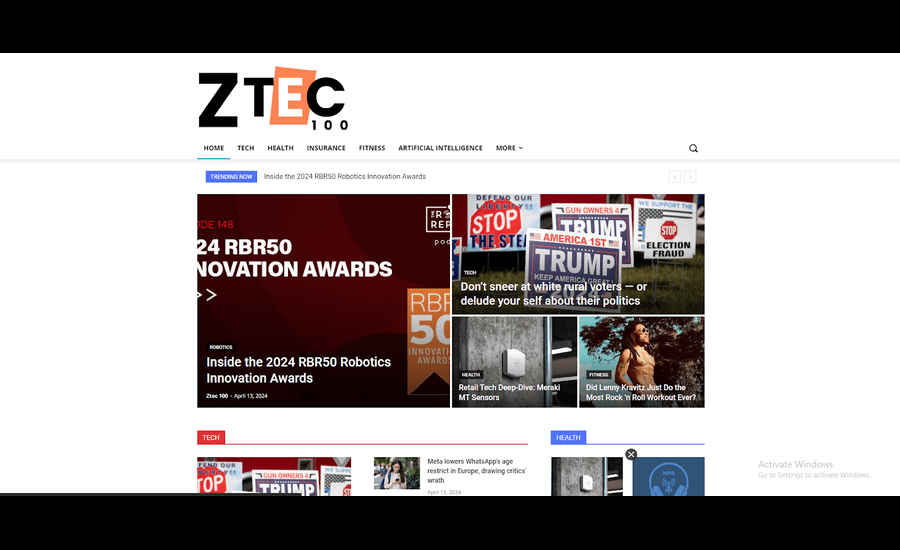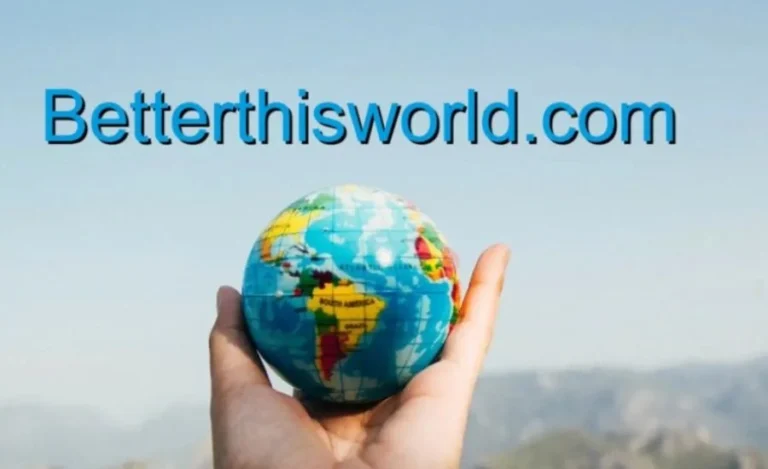ztec100.com Tech Health and Insurance: Expectations vs Reality
In today’s digital age, websites like ztec100.com tech health and insurance play a pivotal role in transforming how we perceive the intersection of technology, health, and insurance. With promises of cutting-edge advancements, streamlined processes, and more personalized services, platforms like ztec100.com are shaping consumer expectations. However, as is often the case, the realities of these innovations don’t always live up to the hype. This article takes a deep dive into the promises made by tech-driven health and insurance services and juxtaposes them against the actual user experience.

The Promises of Tech-Enhanced Health and Insurance Solutions
As consumers become increasingly tech-savvy, industries like healthcare and insurance are under immense pressure to adapt and evolve. Companies such as ztec100.com present themselves as champions of this transformation, offering users promises of better access, greater convenience, and improved affordability. But how well do these promises hold up?
Seamless Integration of Technology
One of the most compelling promises of tech-driven platforms is the seamless integration of technology into daily life. Companies like ztec100.com assure users that their platforms will act as one-stop solutions, integrating everything from health monitoring to insurance management into a single platform. The idea here is that users can track their health metrics—such as heart rate, sleep patterns, and exercise—and tie them directly into their insurance plans for real-time adjustments and savings.
The concept is revolutionary. Imagine having an app that not only tracks your health but automatically informs your insurer about your activities and habits, adjusting premiums and coverages based on your actual lifestyle. For instance, if you’re regularly exercising, eating healthily, and keeping stress levels in check, the system would reward you by lowering your insurance premiums. This promise presents an enticing prospect for consumers who crave more personalized, flexible solutions.
Improved Access to Healthcare and Insurance Services
Another promise pushed by platforms like ztec100.com tech health and insurance is the idea that technology can democratize access to healthcare and insurance. In theory, tech-driven platforms offer wider access to essential health services—whether it’s virtual doctor consultations, online health assessments, or simplified insurance applications.
These platforms promise a world where physical boundaries no longer matter, enabling patients in rural areas or underserved communities to receive the same level of care and coverage as those in urban centers. They promote the idea that geographic location and socio-economic status should no longer be barriers to quality care or affordable insurance.
Affordability and Cost Savings
The integration of technology is also said to bring about significant cost savings. With more efficient administrative processes, fewer intermediaries, and AI-driven insights, consumers are led to believe that their healthcare and insurance will be more affordable than ever before. ztec100.com, like many similar platforms, advertises savings for those who embrace these tech-driven solutions.
Whether it’s through the elimination of unnecessary paperwork or the potential for discounts via real-time health data monitoring, there’s a pervasive expectation that tech will drive down costs. Additionally, automation is often cited as a means of reducing errors and ensuring that insurance claims and medical records are handled more efficiently, contributing to lower prices.
Enhanced User Experience
With modern consumers expecting user-friendly interfaces, ztec100.com and similar platforms aim to deliver streamlined, intuitive experiences. This involves easy navigation, visually appealing designs, and fast load times across devices. More importantly, it’s about delivering an experience where users feel in control of their health and insurance decisions. Tech-driven solutions promise to simplify the complexities of healthcare and insurance, providing transparency and giving users easy-to-understand information about their coverage, health status, and potential savings.
Now that we’ve explored the expectations set by ztec100.com and other similar platforms, it’s time to delve into the reality and see where these promises hit their mark—and where they fall short.

The Reality: Tech’s Impact on Health and Insurance
While the promises of tech-driven health and insurance solutions sound revolutionary, the reality of their implementation can often be more complicated. Let’s take a closer look at how these platforms perform in practice and explore the gap between expectations and reality.
The Challenges of Seamless Integration
The concept of seamlessly integrating health data with insurance services faces several hurdles in reality. While many companies, including ztec100.com, attempt to create platforms that track health data and adjust premiums in real-time, the actual execution often falls short of expectations.
First, privacy and security concerns pose significant challenges. Users are understandably wary of sharing their personal health data with tech companies, insurance providers, and third-party apps. The reality is that most people are still reluctant to fully trust tech-driven platforms with such sensitive information, despite the potential for cost savings. Furthermore, regulatory frameworks surrounding health data protection, such as HIPAA (Health Insurance Portability and Accountability Act), add layers of complexity to these integrations, making it difficult for platforms to operate across borders seamlessly.
Second, the integration of multiple systems—health apps, insurance providers, healthcare services—is often fragmented. Users might find themselves toggling between several different apps or platforms, leading to a disjointed experience that fails to live up to the “all-in-one” promise.
Limited Access Despite Technological Advances
While platforms like ztec100.com tech health and insurance aim to democratize access to healthcare, the reality is often less optimistic. Access to healthcare and insurance remains inequitable, even in tech-enhanced environments. Although telehealth and online insurance applications are beneficial, they still don’t address the underlying issues that prevent certain populations from receiving adequate care.
For example, many rural or underserved communities lack reliable internet access or digital literacy, rendering these tech-driven solutions largely inaccessible. Even when individuals can access these platforms, they might not receive the same quality of care due to bandwidth issues or the lack of in-person services for more complex medical needs. Moreover, some healthcare professionals resist adopting these new technologies, meaning that in certain areas, tech-driven healthcare solutions remain out of reach.
Affordability: Not Quite as Promised
While ztec100.com and other similar platforms tout cost savings, many users find that affordability remains a significant issue. Insurance premiums, even when integrated with health-tracking technologies, haven’t decreased as much as consumers were led to expect.
Additionally, many of these tech-driven platforms operate on subscription models, adding an extra layer of expense for consumers. For instance, users may have to pay for access to premium features, such as real-time health monitoring or telehealth consultations, which can offset any potential savings from reduced insurance premiums.
The administrative efficiencies promised by automation and AI-driven processes are often outweighed by the added costs of maintaining and updating these systems. As a result, while there are certainly areas where tech has streamlined processes and reduced costs, the overall impact on affordability remains limited.
User Experience: A Work in Progress
The expectation of a seamless, intuitive user experience is another area where reality often falls short. While companies like ztec100.com have certainly improved the design and functionality of their platforms, many users still encounter frustrating hurdles.
One common issue is the overwhelming amount of information users must process. While tech-driven platforms aim to simplify healthcare and insurance, the reality is that these subjects are inherently complex. Users are often bombarded with technical jargon, policy details, and health data that they may not fully understand. This leads to confusion and frustration, as many users still rely on traditional methods (such as speaking with a representative) to make informed decisions.
Furthermore, tech glitches, slow response times, and poor customer support continue to plague these platforms. Even with the most advanced technology, users may find that their claims are delayed, their health data isn’t updating correctly, or their inquiries are met with automated responses rather than real human assistance.

Bridging the Gap Between Expectations and Reality
Despite the gap between expectations and reality, there’s hope for improvement as tech-driven health and insurance platforms continue to evolve. To achieve the lofty promises made by companies like ztec100.com, there are several key areas that need addressing.
Building Trust Through Data Security and Transparency
One of the most critical challenges facing tech-driven health and insurance platforms is the issue of trust. To bridge the gap between expectations and reality, these platforms must prioritize data security and transparency. Users need to feel confident that their personal health information is being handled responsibly and securely. Companies like ztec100.com tech health and insurance must go beyond simply complying with regulations; they must proactively communicate how data is stored, who has access to it, and how it’s being used.
Enhanced encryption methods, transparent data-sharing policies, and partnerships with trusted healthcare providers can help build this trust. Furthermore, giving users more control over their data—such as the ability to opt-in or out of data-sharing agreements—can enhance the user experience and foster greater confidence in the platform.
Improving Accessibility for All Users
While technology has the potential to increase access to healthcare and insurance, companies must also address the barriers that prevent certain populations from benefiting from these innovations. This means ensuring that tech-driven platforms are accessible to individuals with limited internet access or digital literacy.
Companies like ztec100.com can make strides in this area by offering offline solutions, such as downloadable forms or local clinics that facilitate telehealth services for individuals without reliable internet. Additionally, providing educational resources to help users navigate these platforms and understand the complexities of health and insurance can improve overall accessibility.
Enhancing Affordability and Cost Transparency
Affordability remains a key concern for users of tech-driven health and insurance platforms. To meet expectations, companies must focus on delivering tangible cost savings for users. This could involve creating more dynamic insurance pricing models that reflect real-time health data more accurately or reducing subscription fees for premium services.
Additionally, improving cost transparency is essential. Users need to clearly understand how their health behaviors impact their insurance premiums and what they’re paying for in terms of services and features. Companies should prioritize clear, concise explanations of pricing structures and avoid hidden fees or unexpected charges.
Streamlining the User Experience
The user experience remains a work in progress for many tech-driven health and insurance platforms. To meet expectations, companies like ztec100.com must focus on streamlining their platforms to provide a more intuitive, user-friendly experience.
This could involve simplifying navigation, reducing the amount of information presented to users at any one time, and providing more personalized guidance. For example, offering step-by-step onboarding processes, interactive tutorials, and 24/7 customer support (with real humans, not just chatbots) can go a long way in improving the overall user experience.
Balancing Automation with Human Touch
While automation can bring significant efficiencies to the healthcare and insurance industries, it’s important not to eliminate the human element entirely. Users still crave personal interaction, especially when dealing with complex or sensitive issues related to their health and insurance coverage.
Tech-driven platforms like ztec100.com can strike a balance by using automation for routine tasks—such as processing claims or managing appointments—while still offering users access to real human support when needed. This hybrid approach can ensure that users benefit from the convenience of technology without feeling alienated or overwhelmed by impersonal systems.
Conclusion: Managing Expectations in a Tech-Driven World
The intersection of technology, health, and insurance presents both tremendous opportunities and significant challenges. Companies like ztec100.com tech health and insurance are at the forefront of this movement, offering consumers the promise of more accessible, affordable, and user-friendly healthcare and insurance solutions.
However, as we’ve explored in this article, there remains a gap between the expectations set by these platforms and the realities of their implementation. While technology has certainly made strides in improving aspects of healthcare and insurance, there is still work to be done to ensure that these innovations truly benefit all users.
As consumers, it’s important to manage our expectations and remain informed about the limitations and challenges of tech-driven solutions. By staying engaged and advocating for greater transparency, accessibility, and affordability, we can help shape the future of healthcare and insurance in a way that truly meets our needs.






